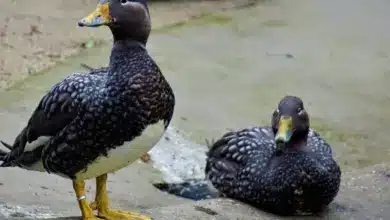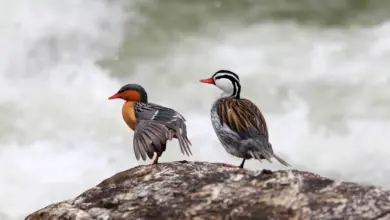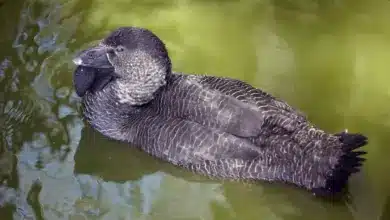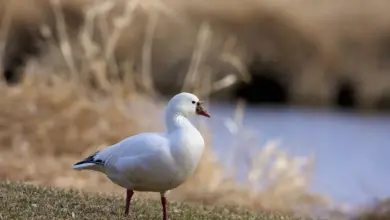They are largely resident, apart from dispersion in the wet season.
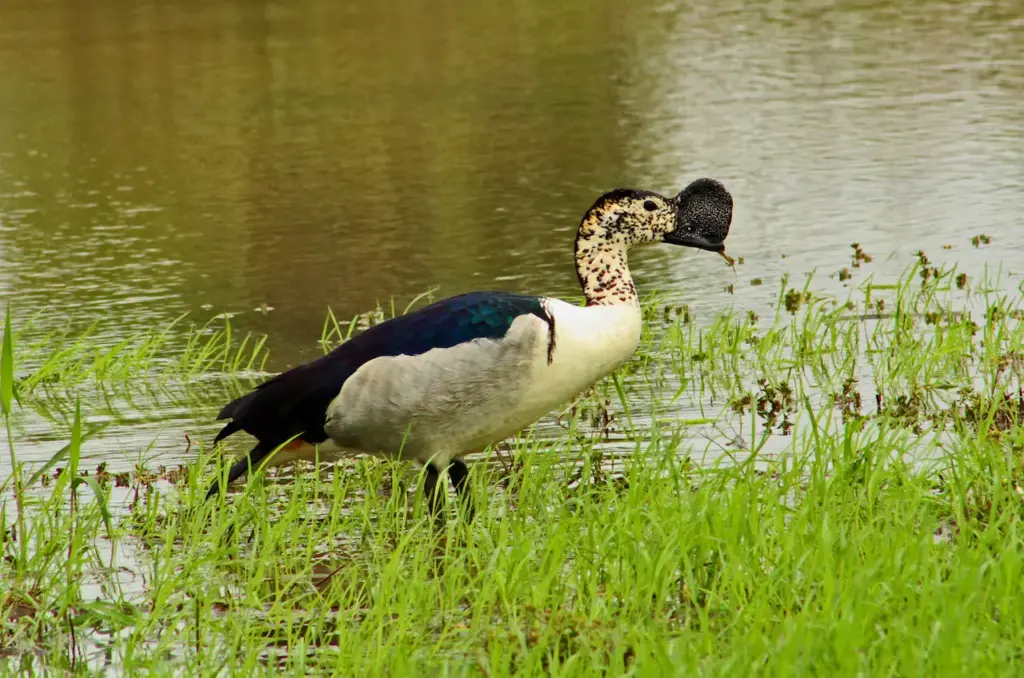
They often perch in trees and are typically seen in flocks. During the wet season, they form small flocks and in the dry season up to 100 individuals can be seen foraging together. Sometimes they separate according to gender.
Even though they are locally common, their numbers are declining. Still, due to their wide range, this species is not yet considered globally threatened by the IUCN. However, it is given protection under the Agreement on the Conservation of African-Eurasian Migratory Waterbirds.
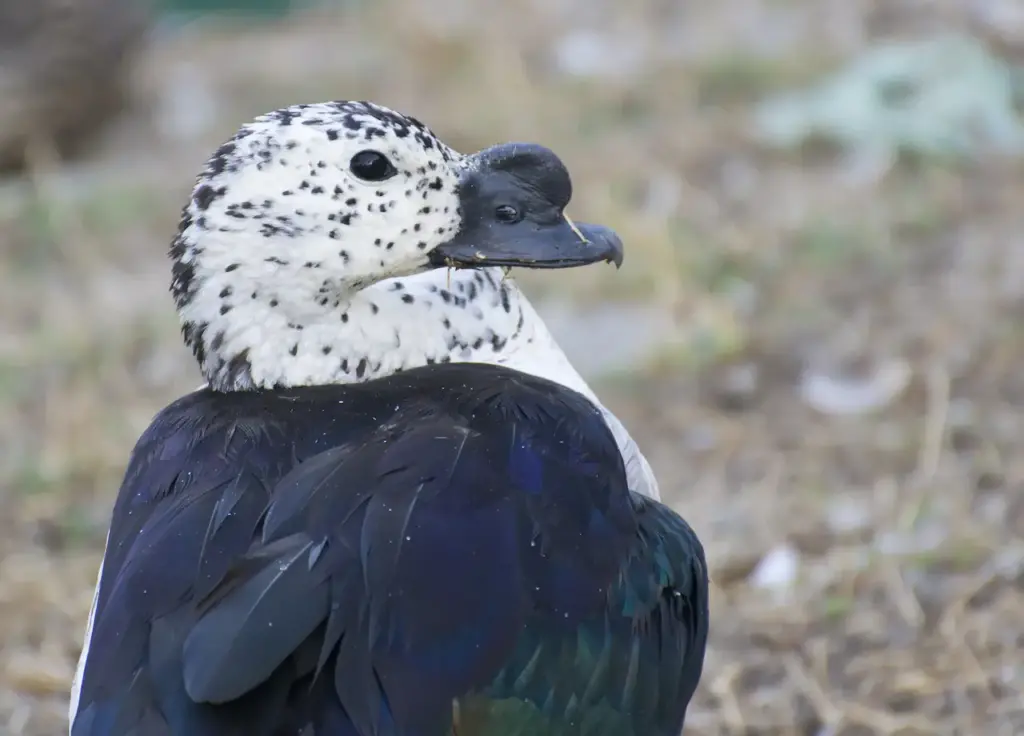
They occur naturally in …
-
- the tropical wetlands in sub-Saharan Africa, Madagascar and south Asia from Pakistan to Laos and extreme southern China; as well as in
- continental South America south to the Paraguay River region in eastern Paraguay, southeastern Brazil and the extreme northeast of Argentina, and as a vagrant on Trinidad.
Description
Adults have a white head freckled with dark spots, and a pure white neck and underparts. The upper plumage is glossy blue-black, with a bluish and greenish iridescence, particularly prominent on the black knob on the bill. Y flight feathers (lower arm feathers). The male is larger than the female, and has a large black knob on the bill.
Juveniles are dull buff below and on the face and neck, with dull brown upperparts, top of the head and eyestripe.
Similar Species:
- Immatures Ducks look like a large greyish female of the Cotton Pygmy Goose (Nettapus coromandelicus) and may be difficult to tell apart if no other birds are around to compare size and hue.
- If seen at a distance, they can also be mistaken for a Fulvous Whistling-duck (Dendrocygna bicolor) or a female Australian Wood Duck (Chenonetta jubata). The former is more vividly colored, with yellowish and reddish brown hues; the latter has a largely dark brown head with white stripes above and below the eye. However, Knob-billed Ducks in immature plumage are rarely seen without adults nearby and thus they are usually easily identified too.
There are two easily distinguished subspecies:
- Knob-billed Duck (also called Nakta in South Asia) or Old World Knob-billed Duck (Sarkidiornis melanotos melanotos)
- Range: Old WorldID: Larger; flanks lighter (light grey, in females sometimes whitish)
- Comb Duck (Sarkidiornis melanotos sylvicola)
- Range: South AmericaSmaller; flanks darker (black in males, medium grey in females)
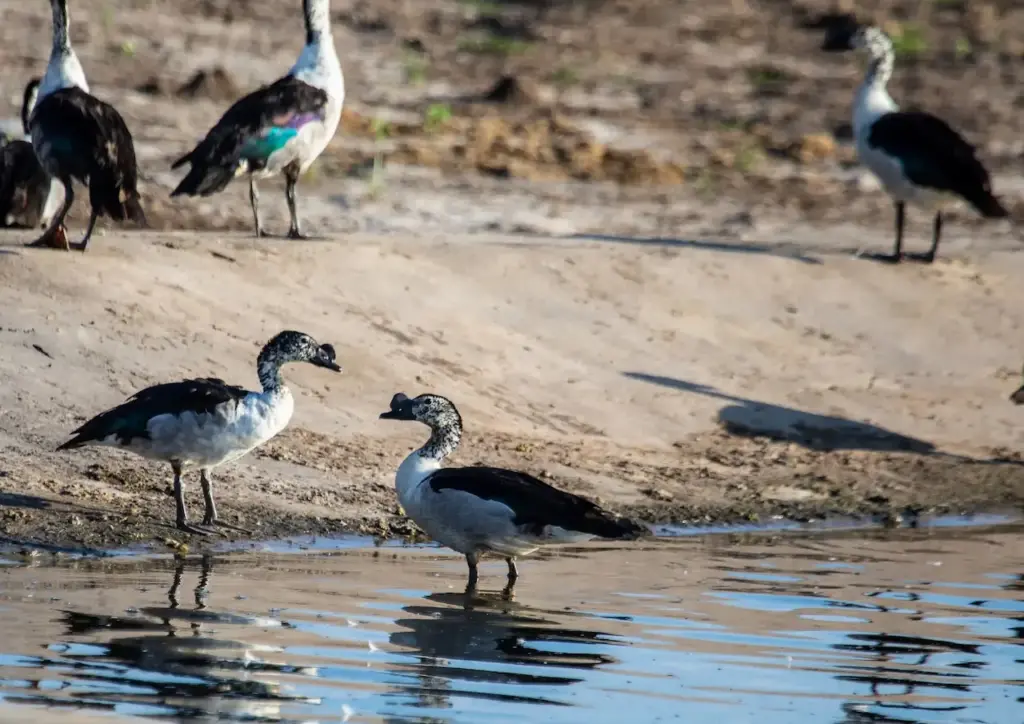
Breeding / Nesting
They breed during and after the rainy season and may not breed in if the rain is scanty in still freshwater swamps and lakes in the tropics. Knob-billed Ducks nest mainly in tree holes, also in tall grass. They line their nests with reeds, grass, or feathers, but not down.
Males may have two mates at once or up to five in succession. They defend the females and young but not the nest sites. Unmated males perch in trees and wait for opportunities to mate.
Females lay 7 to 15 yellowish-white eggs. Several females may lay in a single “dump nest” containing up to 50 eggs.
Calls / Vocalizations
The Knob-billed Duck is silent except for a low croak when flushed.
Diet / Feeding:
The Knob-billed Ducks feed on vegetation by grazing or dabbling and to a lesser extent on small fish, invertebrates and seeds.
Ducks generally feed on larvae and pupae often found under rocks, as well as aquatic animals, plant material, seeds, small fish, snails and crabs.
Feeding Ducks …
We all enjoy ducks and many of us offer them food to encourage them to come over and stay around – and it works! Who doesn’t like an easy meal!
However, the foods that we traditionally feed them at local ponds are utterly unsuitable for them and are likely to cause health problems down the road. Also, there may be local laws against feeding this species of bird – so it’s best to check on that rather than facing consequences at a later stage.
- Foods that can be fed to Ducks, Geese and Swans to survive cold winters and remain healthy when food is scarce in their environment.
Please note that feeding ducks and geese makes them dependent on humans for food, which can result in starvation and possibly death when those feedings stop. If you decide to feed them, please limit the quantity to ensure that they maintain their natural ability to forage for food themselves – providing that natural food sources are available.
Species Research by Sibylle Johnson
Please Note: The articles or images on this page are the sole property of the authors or photographers. Please get in touch with them directly concerning any copyright or licensing questions. Thank you.

